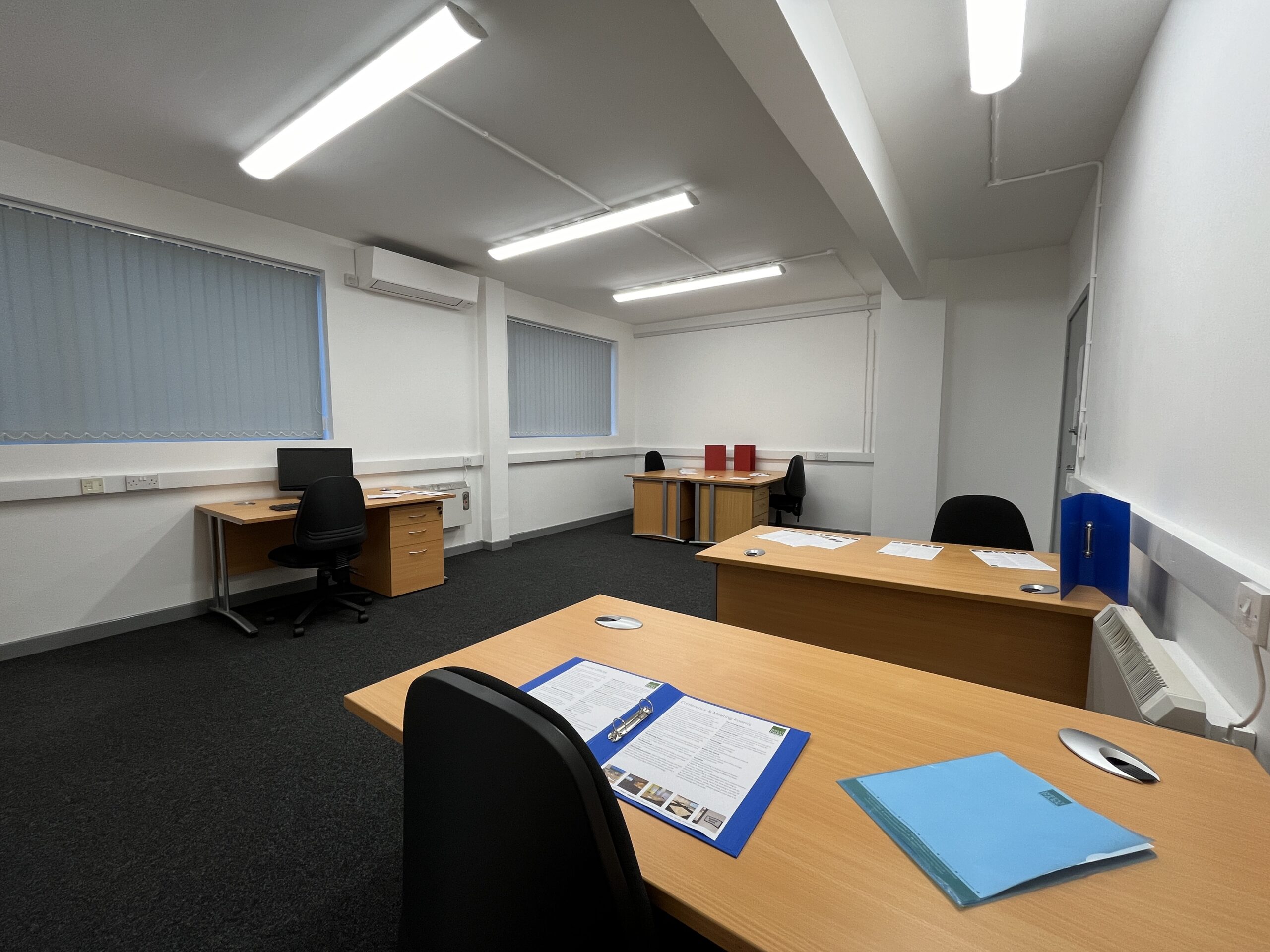Moving Offices? Here’s What You Need to Do (and When)

Moving Offices? Here’s What You Need to Do (and When)
Office relocations represent a major turning point for any organisation, and, with strategic planning, potential disruptions can be minimised while ensuring the transition becomes seamless and productive.
Developing a structured checklist acts as a roadmap for the office manager and all stakeholders involved in the business relocation. It enables a smoother changeover between office locations and substantially reduces potential interruptions to daily operations.
Here is a comprehensive office relocation checklist to guide you through the process.
1. Initial Planning Phase (6–12 Months in Advance)
An office relocation checklist is strategically designed to make moving day less overwhelming and far more manageable. We recommend starting the process at least six months before relocating, and ideally up to twelve months in advance. The larger the organisation, the more extensive the planning required.
Establish Objectives and Motivations for the Relocation
What does your growing business need from a new workspace? Is an office move being considered because the organisation is experiencing substantial growth, with staff numbers increasing and new clients joining regularly?
When evaluating space needs, avoid focusing solely on current headcount; otherwise, you will underestimate your genuine requirements for the next 6–12 months. The worst scenario is completing all the effort of a business move only to discover that the projected 20% increase in staff was inadequate.
Solutions exist for this challenge, including leasing a serviced office for additional personnel. However, when organising an office relocation, factor in post-move business expansion.
Selecting the Ideal New Office Location
Location remains critical for any business. A new workspace should be conveniently located near major transportation connections, with local amenities nearby, and provide sufficient on-site parking for employees and clients. Pinnacle House Business Centre is strategically positioned in Peterborough’s Fengate business district, merely 2 miles from the city centre with convenient access to the A1 and A47, connecting the entire region. Parking is complimentary, with over 100 spaces available, as well as EV charging facilities.
Employee wellbeing and access to collaborative spaces rank highly at Pinnacle House Business Centre – we offer well-designed break-out zones and kitchen facilities, plus the professional environment provides a sense of connectivity and community as we serve a varied business network spanning finance, agriculture, manufacturing, education, automotive, healthcare, and numerous other sectors.
There is also excellent connectivity, being just 75 minutes by rail to London King’s Cross.
2. Intermediate Planning Phase (3–6 Months Before Move)
The reality of a new office address becomes apparent at the 3 to 6-month stage. It is approaching quickly. Take decisive action to guarantee a seamless transition.
Financial Planning and Budget Management
Strategic budgeting and financial oversight are essential for a company’s smooth operation. There are often unexpected costs associated with relocating to a new office. If a relocation committee has been formed, it must accurately calculate these expenses, ensuring that nothing important is overlooked.
Standard costs encompass the new lease, security deposit, furniture, office refurbishments, and relocation services to transport existing furniture, fixtures, and equipment to the new premises.
Seek cost-effective options wherever feasible. Does the office provider supply furniture with the office lease? Are internet and utilities bundled, or are there expensive setup charges for connection? Pinnacle House includes office furniture, ultra-fast fibre broadband, and utilities (including heating, lighting, and power) with their managed offices.
Supplier Selection and Coordination
Within a comprehensive office move checklist, selecting the appropriate moving company often receives inadequate attention. Negligence can derail the entire moving process. Inadequately packed and poorly secured office equipment may become damaged during transportation. This creates additional business disruption.
The IT department represents another critical area requiring precision. Without proper handling, staff will not be able to access systems and continue their work. A dedicated team focused on IT relocation is essential. When external suppliers or third parties are involved, coordinate with them well in advance to maintain operational continuity.
Request multiple quotations for the office move. Compare authentic supplier testimonials to identify the optimal choice. Confirm how many years they have successfully delivered their services. Have problems occurred previously? If so, what lessons did they extract from those experiences?
3. Pre-Move Organisation (1–3 Months Before Relocation)
Understanding all the components enables thorough, advanced preparation.
Staff Preparation and Communication
Notify employees about the upcoming move. Address the issue transparently and respond to questions to alleviate any concerns.
Ask team members if there are suppliers or other contacts they work with directly who need notification. If so, how much advance notice do they require?
Ensure the right people are concentrated on the office location change. Any relocation strategy must keep relevant staff informed about their responsibilities. Monitor assigned duties to prevent oversights.
Technology and Infrastructure Strategy
IT relocation demands meticulous planning and implementation. It is a separate and distinct process from the physical office move.
Access to electrical supply, power outlet locations, and network connection points (or Wi-Fi provision) is essential for optimal functionality. Develop a floor plan that documents all existing power sources, identifies where extension leads are necessary, and specifies cable protection (to prevent accidents) where suitable.
Include all computing equipment, such as servers, workstations, printers, and other relevant items, on the floor plan. Equipment should be assigned a colour-coded tag identifying the department to which it belongs.
Implement a data backup protocol to enable the restoration of any hardware that experiences data loss or drive failure during relocation. Additionally, ensure backup hardware is ready to replace damaged equipment and reduce downtime.
4. Final Month and Moving Week
The approaching move is now imminent.
Packing and Identification Systems
As the deadline approaches, pack away infrequently used office equipment and excess furniture. Optimal practices include using correctly sized containers and applying bubble wrap protection around items to safeguard them during transport.
Identification systems work most effectively when implementing different colour schemes per department. Subsequently, allocate each employee a distinctive code and apply this identifier to their workstation, seating, and other associated equipment.
Final Verification and Backup Plans
Confirm the final arrangements with the moving company to ensure mutual understanding. The same applies to employees. This includes maintaining communication and verifying that no issues have emerged that have not been relayed to the office move coordination team.
Create a backup plan for essential business functions that may be interrupted by operational difficulties or complications, which could impact client relationships or business performance. This might involve utilising cloud services, disaster recovery protocols, or alternative approaches.
Previous Office Final Condition
The conditions of the office lease or licensing agreement regarding property and system deterioration protect the previous landlord. Remove company signage from the office. Check whether removal has revealed previously hidden damage, such as discoloured paintwork or mounting holes.
The departing tenant bears responsibility for dilapidation expenses, which involve returning the property and interior to their original state, subject to relevant clauses.
Complete any necessary repairs well in advance of moving day. Document the repairs photographically and record any concerning areas for future reference. Discuss the repairs with the landlord and verify whether they satisfy the required standards.
Address Change Procedures
Compile a comprehensive list of all organisations, government agencies, financial institutions, service providers, contracted companies, utility suppliers, and other relevant entities. Inform them of the relocation date, address change, and any other important information.
Coordinate with the telecommunications provider regarding plans to redirect phone systems until new installations are complete.
Letterheads, compliment slips, business cards, and other printed materials need updating with the new contact details.
Confirm that the new office’s security systems are operational before relocation day. This prevents any access complications, which would create significant problems.
5. Relocation Day
Prepared for the business move today?
Essential Activities and Moving Day Schedule
Create a detailed moving day strategy document. Include a comprehensive timeline and hourly schedule for all participants in the move, including staff, external movers, and installation teams.
Document any damage to the previous office discovered when relocating furniture and potentially during the removal process. Photograph any new problem areas and inform the previous landlord accordingly.
Every employee must understand their roles and responsibilities.
6. Post-Relocation Setup and Adaptation
The move is complete, but what remains to be done?
New Office Configuration
The office arrangement establishes the foundation for future operations – position office furniture by department to organise it according to established teams.
IT infrastructure, including servers, workstations, printers, phones, and other hardware, follows next.
Activate essential services promptly through phone systems, call forwarding, and other means.
Employee Adaptation and Input
Ensure smooth office adjustment for employees. Designate one person per team to handle department-specific problems.
Escalate more substantial issues, involving multiple departments, to the office move coordinators. Maintain a list to avoid contacting the organisers repeatedly. Prioritise the most urgent matters to ensure they receive immediate attention.
7. Future Strategy and Considerations
Conduct a post-move evaluation once everything has stabilised. How should this influence future strategy and other considerations?
Assess the Move’s Effect on Business Operations
How were operations impacted or disrupted by the move? Would it have been beneficial to establish the IT systems and relocate certain items to the new office before moving day? Or was it practical to relocate in a single day while maintaining company operations?
Would it be valuable to modify the relocation strategy for future office moves?
Ongoing Enhancements and Modifications
Be prepared to make office adjustments considering new floor plans that prove less than optimal. Can they be enhanced over a weekend or during a quiet period?
Have workflows identified areas requiring improvement? Can these be addressed in the new office space, where it is more practical to reimagine systems and procedures?
Conclusion
Planning and executing an office move represents a substantial undertaking. Selecting the location, securing the office, designing new office layouts and furnishings, budgeting for the move, preparing your teams, hiring movers, and completing everything demands considerable time and effort.
Experience always provides valuable lessons. We hope this blog post provides you with clear guidance on what to expect. Pinnacle House Business Centre strives to make office relocations as smooth as possible.





